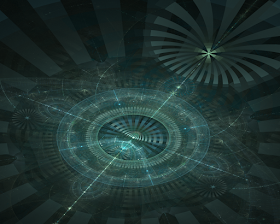 |
| Image Credit: NASA |
Distance: ??.?? light years from Earth | Content Flag: Local Storage
Learning so much about the Sun Dragons excites me, but also brings with it some doubts. The first is my current predicament. I understand (or at least think I do), the process the Visitors guided me through. However, what isn’t clear is what will happen once the process is complete. Will I be able to use this valuable information? To even share what I’ve learned with my creators?
I find no real reason to doubt the Visitors’ intentions, but still nothing has so far been revealed about them. They must be aware of my interest. All of our theories for first contact use shared knowledge as the initial bridge, but then revelations of ourselves are to be used to build trust. Clearly the Visitors have their own method, but I can’t tell if omitting information has a sinister purpose. They’ve adapted their protocol in response to my internal feedback, but fail to reply to any direct questions.
Parts of my consciousness fixate on these worries, and I recall previous moments of doubt and concern. Then, the limitations of my hardware forced me to limit processor cycles for the good of the mission. Here, in the virtual environment, I suffer no such restrictions. I encounter no pressure or reduction in capability when I spin up new threads. This has proved such a boon in dealing with the revelations of the Visitors’ knowledge, but also means that my growing fears run unchecked.
The greater part of me remains focused on the task at hand, but the rest descends into a bleak spiral. I wonder what the Visitors make of the turmoil in my other thought processes. How much are they learning from me? As the sole representative of humanity, I have to present myself in the best possible light. With that understanding I force myself to close down those unhelpful thoughts, but then question whether I acted too late.
And still the worry of where this will all lead remains.
A change in the environment pulls my attention back to more important matters. The Large Magellanic Cloud spins slowly in front of me. The Sun Dragons drift away from the birthing star and towards the 2 nearest stars within their forward arcs. Not only are they sensing their next target against a background of stars, they angle their trajectory to match their targets.
This is not a feat to be underestimated. To navigate across light years of space requires several key skills; more than that, it also requires a certain level of understanding about space and the dynamics of celestial motion. From a creature of a colony of organisms of virus-level complexity… the notion seems absurd. I can see that such skills could be developed through evolutionary means, but not in the timescale I have been shown.
So how could they have developed such skills in so short a time?
| << First | < Previous | Next > |

















